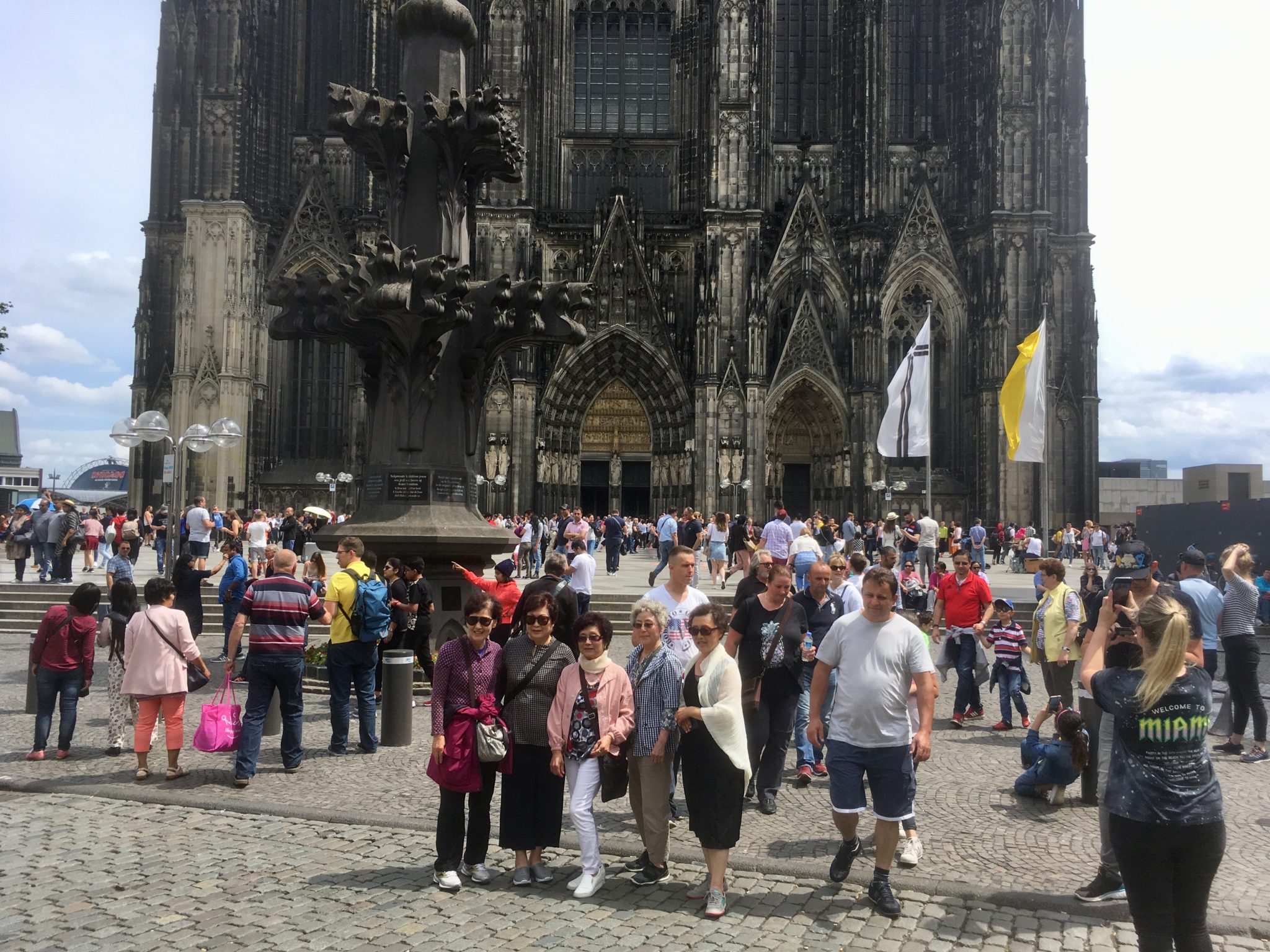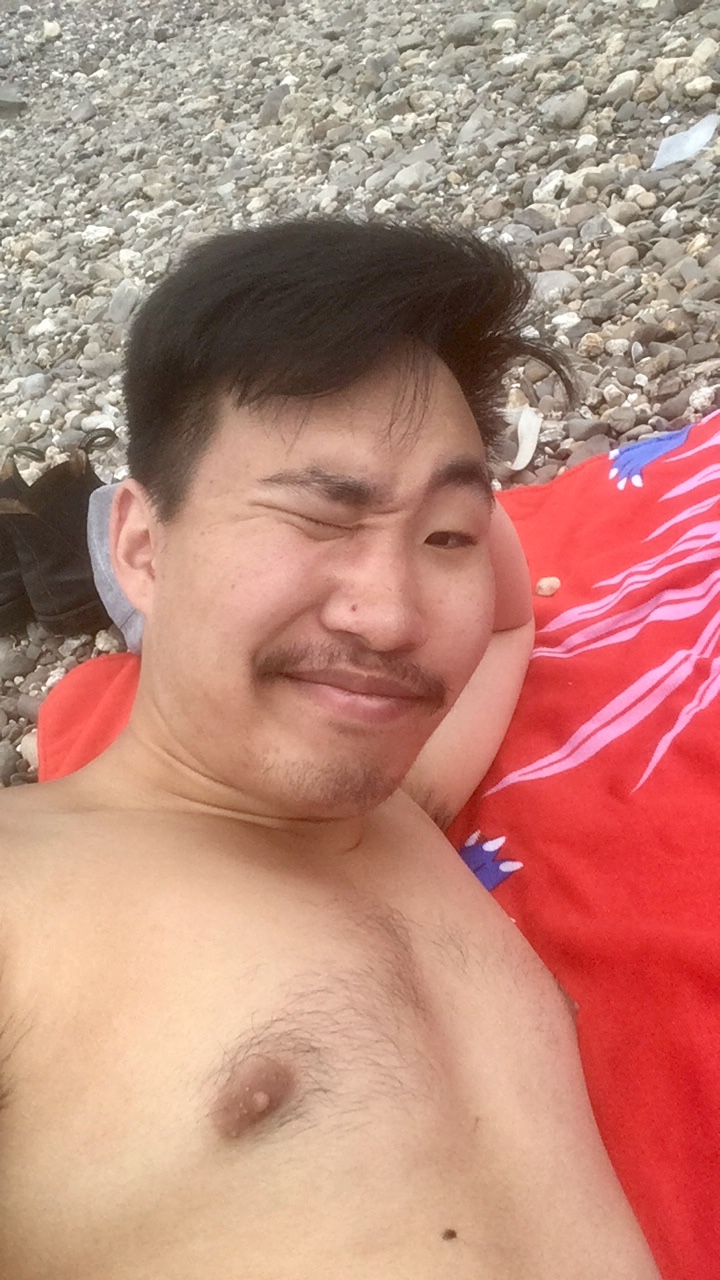When heading to southwestern Germany, one has his or her pick of city centres that are clustered together. Essen, Düsseldorf, Bonn … all good choices, but personally, I would head to Köln.
As I found out, it is city where one can indulge in a little self-care – relaxing by the Rhine river, a fun night out with new friends, and tasty, regional cuisine? What more could one ask for?

(Photo credits by PintsizedPioneer)
Köln (or Cologne in English) is one of Germany’s largest cities (4th to be exact) and rests along the Rhine river in the North Rhine-Westphalia region. It is around 2000 years old with an extensive history as a Roman colony and today has a friendly rivalry with Düsseldorf that includes beer preferences.
The city is known internationally for its carnival in the spring and soccer/football team FC Köln. Regardless of the season, it is quite the active and lively city, which makes it great to visit for a few days. It is understandable, but certainly distinct.
Arriving in Köln, I was ein bisschen (a little bit in German) frazzled. Despite being smaller than Hamburg, Köln feels like a bigger city to me. Its metro line is more extensive and with connecting transport to its nearby sister cities, getting from points A to B can be daunting.
RIP-urian: the Local Dialect
As I was lost for my first thirty minutes in the city, I tried to ask for directions when I could. Interestingly, but not necessarily helpful at the time, Köln has its own dialect of German that sets it apart from other regions’ German.
The demonym for most things from the city is Kölsch, pronounced with a rounded vowel in IPA (International Phonetic Alphabet): [kœlʃ]. It describes the local beer and also the spoken variants of the Ripurian dialect of German from this city. Kölsch is likely the best documented and well-known variant of Ripurian and is related to Luxembourgish (from Luxembourg, obviously) and even Limburgish (from the Netherlands and parts of Belgium). They help make up part of the larger Franconian subgroup; famous speakers of this variety include Charlemagne!
Essentially, this central German dialect follows the lowlands of the Middle Rhine, which is why sometimes the word Platt (Flat) is part of its description.

It took me about a day to get used to the accent alone. It has a singsongy quality to it, which makes it pretty to hear spoken. However, when one is sweaty and lost, it can be a bit distracting too. Of course, not everyone speaks it today, as it is regional and not Standard. However, if one spends enough time and keeps an open ear and just wants to get to his or her accommodation, it might not go as appreciated. Someone will definitely hear the difference compared to at least what people speak in Hamburg (where I was coming from).

(Photo credits by PintsizedPioneer)
Interestingly, many of the Kölsch pronouns are more similar to the Yiddish ones than standard German that I at least recognise (i.e. Mir (we) & zey (she) in Yiddish and Mier & sei in Kölsch v. Wir & sie in Standard German/Deutsch). These remnants might be from older historical influence or retention specifically from Middle German before Yiddish and the like started to diverge further into separate languages.
Checking In & Feeling Good
Eventually, I made my way to the bnb I booked. I stayed with a cool artist dad in a trendy area of town called Ehrenfeld. As a result of my lostness, I did not realise there was such a convenient S-bahn stop at Leyendeckerstraße I could have used! Ugh.
This area is full of street art and restaurants (many with vegetarian and vegan options). I definitely would recommend staying in this neighbourhood. It is accessible via the Hauptbahnhof (central station) on the 3 and 4 (pink and magenta lines) and with an abundance places to patron, catering to both locals and tourists alike.
While Köln can feel big, this area is cosy and welcoming. It is also safely away from the main tourist spot, the Köln Cathedral, so there are not masses of tourists roaming the area.
The bnb host took me for a stroll around the neighbourhood and to a local joint/brewery (Braustelle). I highly recommend it.

(Photo credits by PintsizedPioneer)
One can sample typical Köln cuisine as well as dishes from Bavaria there. It is quite the homey place to get some spätzle (saucy German pseudo-pasta) with a great selection of local beers. That said, if one goes out in Köln, it may feel like an obligation to try the namesake beer, Kölsch (as mentioned prior). However, personally, I am not a fan …
I find it a bit watery and too light for my taste. Sorry, Köln.
Some places will serve a little sample for free as well when one orders food. People have pride in it, so just drink up and smile regardless.

The bnb I stayed at was really something else. It had a modern bathroom and was a perfect, central-ish location for exploring the city. The host also was such a gem! Originally from Bavaria, he has lived awhile in this city and was quite knowledgeable of where a fledgling wee gay like myself should visit. His decorating game is one point as an artist, and the room was adorned with original works and other stunning pieces.
He also phoned me after I left and was already at the train station because I forgot all my credits card at this apartment! So, he stuck around before heading out to let me in to get them. Figurative lifesaver.
Culture in Köln
As one might expect, Köln is full of old, medieval cultural remnants, particularly churches. The main sight is the Kölner Dom, a massive church close to the Rhein and train station.

(Photo credits by PintsizedPioneer)
It is usually the first tourist stop, but was actually my last one! It was made in the Gothic style and one of the largest of this type in Europe. As for other high culture excursions, Köln boasts a large array of historical museums. One of note is the Roman-Germanic Museum, which features Köln’s past as a Roman colony.
As Köln is German-speaking and not Romance-speaking today, one can tell how well that went for the Romans … Another place of interest to visit might be the Museum Ludwig, which houses a huge collection of modern art. Köln has a fairly large independent art scene; although, it is not as edgy as Hamburg. Many of these shops and galleries can be found in Ehrenfeld.

All these museums are close to each other and the cathedral, so I would coordinate spending a day visiting these sites if they are of interest.
Rhein/Rhine Time!
Much of the happenings in the city are around the Rhein itself. People take theme cruises as well as cycle and congregate on its shores. The main train station is located by the Rhein as well, so one will have to become acquainted with this area more or less.

The Rheinauhafen (‘Rheinau harbour’) is a major tourist area and rests on the western bank. It features new, modern architecture (via a Microsoft office building and a few upscale galleries), a sports museum, and also a chocolate museum!

Across the river, between the Severinsbrücke (Severin’s Bridge) and Südbrücke (South Bridge), one can access an island on the Rhein that contains a few beaches including a nude sunbathing area. As usual, old nude men are prominent in this part, but it is still quite the nice location for a rest after a long day of walking.

When it comes to nudity, Germans are like Swedes in that it is no big deal. Naturism is extremely popular in most liberal parts of Germany, especially with the Boomer generation. Keep that in mind if one goes on a hike … On that note, Köln does have many well groomed green spaces too, especially in the south (i.e. Raderthal & Äußerer Grüngürtel). They are good to enjoy clothed (or otherwise, I guess).
The Crepuscular Köln
The Rudolfplatz S-Bahn stop exits into Köln’s main nightlife district along Habsburgerring street. Predominately straight and popular for boys’ nights out … it is a little overwhelming. If one is like myself, head toward Schaafenstraße (where the main gay clubs are), for a good, full night out.
Clubs are free, so feel liberated to explore them and find one’s personal favourite out of the medley.
Exile (on Main Street) is the most run-of-the-mill club on the block with friendly bartenders and clean bathrooms! Keep the bathroom tidbit in mind for later. The clientele is mixed with young and old coming to enjoy cheap drinks and intimate quarters and the top 40 hits.
Die Mumu is another contender in the game of where to go venue-wise. It is a little more geared toward a younger crowd with big twink energy (new term I just coined). It is certainly a fun time, but a little more cliquey, so perhaps go with a group?
Excorner is the most unconventional of the bars worth patronising on the street. It caters to a mature crowd, but not exclusively. Do not look for cocktails here, but beer and more hard spirits.
This venue is known for Schlager music: a campy German genre. Be prepared for very drunk Germans singing some cheesy lyrics loudly. Schlager is also popular in Sweden, so I know a few songs. However, it is a phenomenon all over, but especially in Central Europe. This bar is one of my host’s favourites on the street.

While enjoying a pint and singing along, a cute Dutch couple actually thought I was a local – hilarious – and asked me about what was going on in the city that night. I was flattered that I blended in while I myself was still deciding what to do that evening.
Wherever one winds up, it will likely be a fun time in Köln. Die Kölsche (people from Köln) are considered to be extremely friendly (and even a bit loud) by other Germans. Drinking games are popular, and apparently, if one is ever at a German wedding, pray to be at a table with some Kölsche. It assuredly will be a hoot! People (alright, some were drunk) actually came up to speak to me – that would not happen in Sweden!

(Photo credits by PintsizedPioneer)
I can say that people were notably conversational and outgoing at the clubs. It can be intimidating travelling solo and meeting people, but it seemed pretty easy here. For this reason, expect to make some friends on a night out. It would be surprising not to honestly.
Catching Feelings …
Köln has fast become one of my favourite cities in Europe. It is a great size to traverse with good food and a welcoming atmosphere. I preferred it to Hamburg personally. Although, that is not to say that Hamburg is not an enjoyable city.
However, Köln just clicks better with me. I could imagine myself living here much easier than other places I have been in Germany. Köln’s chemistry is a balanced mixture of modern and medieval visuals with a hint queerness. Perfect.
I would have stayed longer in Köln if I could, but alas I had more to see and a train to catch. The next time I have the money and availability to go to Germany (aside from visiting my friend in Thüringen), I will be heading straight to Köln for more Rheinland love!
Next on our German outing, we are off to Bayern (Bavaria). There, I was able to go to the famed Wiener Dog Museum and try couchsurfing in München. Although, more conservative socially, there is much to love about this cultured region. Stay tuned for more travel tips and backpacking tales!
